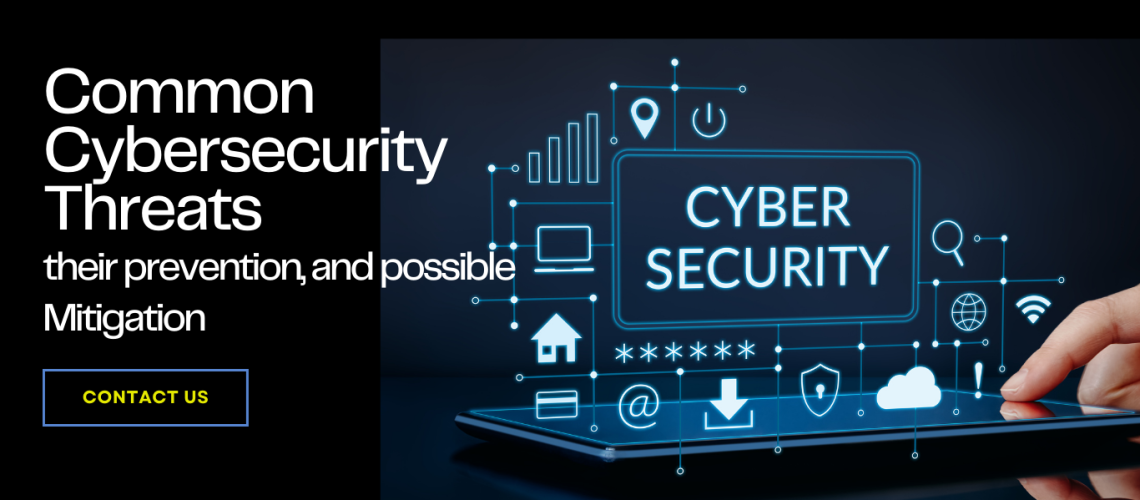Top cybersecurity threats : Cybersecurity remains at the forefront of technological discussions, as information stands as the cornerstone of the ongoing technological revolution. Possession of information empowers one to rule over others, but malevolent actors seek to exploit this power for their gain. Despite the existence of numerous laws to prosecute these wrongdoers, the age-old adage “Prevention is better than cure” underscores the importance of averting potential threats facilitated by system vulnerabilities.
Distinguishing between a cyber-attack and a cybersecurity threat is imperative.
A cyber-attack involves offensive maneuvers targeting computer systems, networks, infrastructures, or personal devices. On the other hand, a cybersecurity threat entails potential negative actions arising from vulnerabilities, leading to undesirable impacts on computer systems or applications.
Daily life is fraught with countless cybersecurity threats. A study by the Clark School at the University of Maryland estimates a staggering number of attacks, highlighting the urgency of the issue. These attacks use weaknesses in systems and are commonly referred to as threats. This article provides an introduction to the realm of cybersecurity threats, going into their prevention and comfort.
Different types of cybersecurity threats:
- Malware: Intrusive software designed to harm systems.
- Phishing: Attempting to acquire sensitive data through fraudulent solicitations.
- Password Attacks: Malicious authentication into password-protected accounts.
- DDoS: Malicious cyber-attacks rendering online services inaccessible.
- Man in the Middle: Intercepting and altering data between communicators.
- Drive-by Downloads: Unintentionally downloading malicious code.
- Malvertising: Injecting malicious code into legitimate online ads.
- Rogue Software: Deceptive software that misleads users and installs malware.
Malware: Malware is an online attack that affects your system. It may be in the form of files that are entering into your system. Defined by malicious intent, the malware steals data or wreaks havoc on the host system. It intrudes for various purposes, from financial theft to corporate espionage. Infected files via email attachments, websites, and OS vulnerabilities are common vectors.
Prevention:
- Use secure authentication methods.
- Limit administrative account usage.
- Regularly update software.
- Adhere to the principle of least privilege.
- Implement email security and spam protection.
Mitigation:
Mitigating malware involves immediate action, as advised by ncsc.gov.uk:
- Disconnect infected devices from all network connections.
- In severe cases, consider disconnecting from the internet.
- Reset credentials and passwords.
- Wipe infected devices and reinstall the OS.
- Verify malware-free backups before restoration.
- Install, update, and run antivirus software.
- Monitor network traffic and conduct antivirus scans.
Phishing:
Phishing entails sending malicious communications to trick recipients into scams. Spear Phishing targets specific individuals, while Whaling targets high-profile individuals. Smishing and Vishing involve SMS and phone calls, respectively.
Prevention:
- Conduct regular security awareness training.
- Run internal phishing campaigns and simulations.
- Utilize anti-phishing software.
- Follow safe Internet practices and exercise caution.
Password Attacks: Password attacks involve malicious methods to breach password-protected accounts. Brute force, dictionary attacks, and key loggers are common techniques.
Prevention:
- Update passwords according to policies.
- Use complex passwords and security questions.
- Employ multi-factor authentication.
DDoS: Distributed Denial of Service DDoS attacks overwhelm servers with traffic, rendering online services inaccessible.
Prevention:
- Stay updated with software and security monitoring.
- Monitor data flow and physical connections.
Man in the Middle: Attackers intercept and alter data between communicators, often leading victims to believe they have a private connection.
Methods:
- Attack encryption protocols.
- Spoof HTTPS and SSL connections.
- Hijack SSL sessions.
- Intercept communication protocol layers.
- Spoof IP and ARP addresses.
- Deploy Automatic Proxy Discovery and DNS Spoofing.
- Misdirect using BGP manipulation.
Prevention:
- Use VPNs and secure connections.
- Implement endpoint security.
- Enable multi-factor authentication.
Drive-By Downloads: Malicious code is unintentionally downloaded, infecting systems through insecure apps, browsers, or OS.
Prevention (Website Owners):
- Keep website components up to date.
- Remove outdated components.
- Strengthen admin credentials.
- Install protective web security software.
- Consider ad content’s impact.
Prevention (Endpoint Users):
- Limit admin account usage.
- Keep software up to date.
- Avoid unnecessary programs.
- Use internet security software.
- Exercise caution on websites.
Malvertising: Malvertising embeds malicious code in online ads, often targeting users through reliable advertising networks.
Prevention (End-users):
- Utilize antivirus software and ad blockers.
- Avoid Flash and Java.
- Keep browsers and plugins updated.
Prevention (Publishers):
- Vet ad networks and inquire about security.
- Scan ad creatives for malware.
- Limit ad frames to specific file types.
- Employ web application firewalls.
Rogue Software: Rogue security software deceives users into paying for fake malware removal, installing malware instead.
Prevention:
- Practice online suspicion.
- Familiarize yourself with phishing scams.
- Be cautious of suspicious links.
By understanding and countering these threats, individuals, and organizations can bolster their cybersecurity defenses and navigate the digital landscape safely.
Contact us at Green Edge Computers to safeguard your business from Common Cybersecurity Threats. We provide your business with the best cyber security services and help you to keep your business safe from all online cyber threats.



